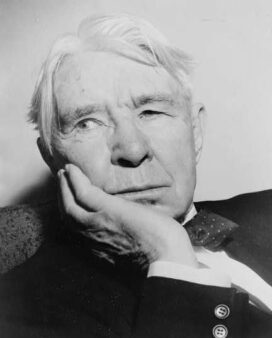Facts about Carl Sandburg
Carl Sandburg Biography
Carl Sandburg was a great voice of the American industrial age, a “people’s poet” who combined the mystical patriotism of Walt Whitman with the social activism of Woody Guthrie. Sandburg’s special topic was the bustle and spirit of midwestern and urban America; his most famous poem, Chicago, begins: “Hog Butcher for the World / Tool Maker, Stacker of Wheat / Player with Railroads and the Nation’s Freight Handler / Stormy, husky, brawling, City of the Big Shoulders.” Sandburg’s volumes of poetry include Chicago Poems (1916), Smoke and Steel (1920), Good Morning, America (1928) and The People, Yes (1936). Sandburg is nearly as well known for his colossal six-volume biography of Abraham Lincoln — The Prarie Years (two volumes, 1926) and The War Years (four volumes, 1940) — which still is considered the definitive biography of the president. In addition to all that, Sandburg wrote for the Chicago Daily News and often travelled around the country, singing and collecting folk songs and reciting poetry. He published a collection of 280 folk tunes, The American Songbag, in 1927. His whimsical book Rootabaga Stories (1922) remains a favorite with children. Sandburg twice won the Pulitzer Prize, in 1940 for Abraham Lincoln: the War Years and in 1950 for his Complete Poems.
Extra credit
Sandburg volunteered for the U.S. Army and served in Puerto Rico (but did not see combat) during the Spanish-American War of 1898… Sandburg was married to Lillian Steichen, sister to the photographer Edward Steichen, from 1908 until his death in 1967… His popular poem “Fog” begins with the line, “The fog comes on little cat feet…”

